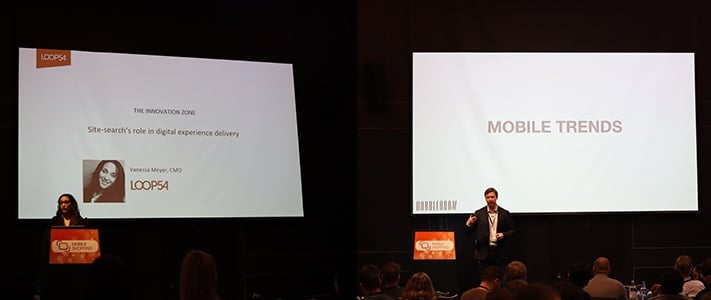At Loop54, we’re dedicated to innovation. We’re always looking for new and inventive ways to help our customers achieve their e-commerce goals and, to stay on top of the latest trends, we travel the world attending conferences to engage with Europe’s most progressive retailers. Just last fortnight, we visited Mobile Shopping EU 2018 – a gathering of top mobile innovators from around the EU – here’s a summary of our findings.
1. The Continued Rise of M-Commerce
As all good retailers know, mobile, when utilised effectively, is a powerful tool. According to a recent study from Paypal, almost a third of all online shoppers in Europe purchase items on smartphones, and, as we delve deeper into 2018, this number is only expected to grow.
In fact, in a detailed presentation from e-commerce expert Ville Kangasmuukko, CEO of Bubbleroom, it was revealed that while mobile is the fastest growing retail channel, according to Adobe research, 53% of consumers still aren’t satisfied with retailer mobile sites.
This presents a shocking disparity between the demand of the consumer and the supply of the retailer and, as m-commerce continues its growth, must be something that retailers address if they're to remain competitive.
2. The Growing Importance of Site-search
In recent years, retailers have only begun to realise the true value of great site-search. In a presentation from our own CMO, Vanessa Meyer she explained that site-search operates not only as a window through which a shopper can interact with products, but also provides the opportunity to lead a shopper on a journey of both inspiration and discovery.
She followed this up by explaining that, according to a study from Econsultancy, fully-integrated site-search improves on-site conversion rate by almost 100% and, for mobile specifically, it holds even greater worth.
Quoting our own proprietary research, Vanessa explained that shoppers are 20% more likely to use site-search on a smartphone than on a desktop and as the trend of mobile purchasing continues to grow, this will be of even greater importance throughout 2018.
3. The Emergence of Machine Learning
Machine learning has amassed widespread interest throughout the retail sector, without ever quite becoming indispensable. However, 2018 is looking like it could be a transformative year, not least thanks to these three key factors.
I. Automated search merchandising
Machine learning offers an opportunity for retailers to augment established search techniques with behavioural data and automation to create a seamless, unique, and highly profitable product search experience for consumers.
II. Real-time personalisation
Machine learning provides the ability to collect valuable data about a shopper from their on-site behaviour, and then synthesise it in real-time to identify insight that can lead to meaningful and successful personalised experiences.
III. Ease of implementation
Machine learning is based on a set of algorithms that attempt to model high-level abstractions in data, but by building a model of the product catalogue and training the algorithm on the model, the implementation can be quick and easy.
The benefits speak for themselves and one thing is certain: as machine learning continues with its exponential growth in popularity in 2018, a growing number of retailers will look to utilise the technology on-site and mobile.
Summary
All in all, 2018 looks like it will be a transformative year for mobile shopping within the EU. As m-c
If you're one of those



